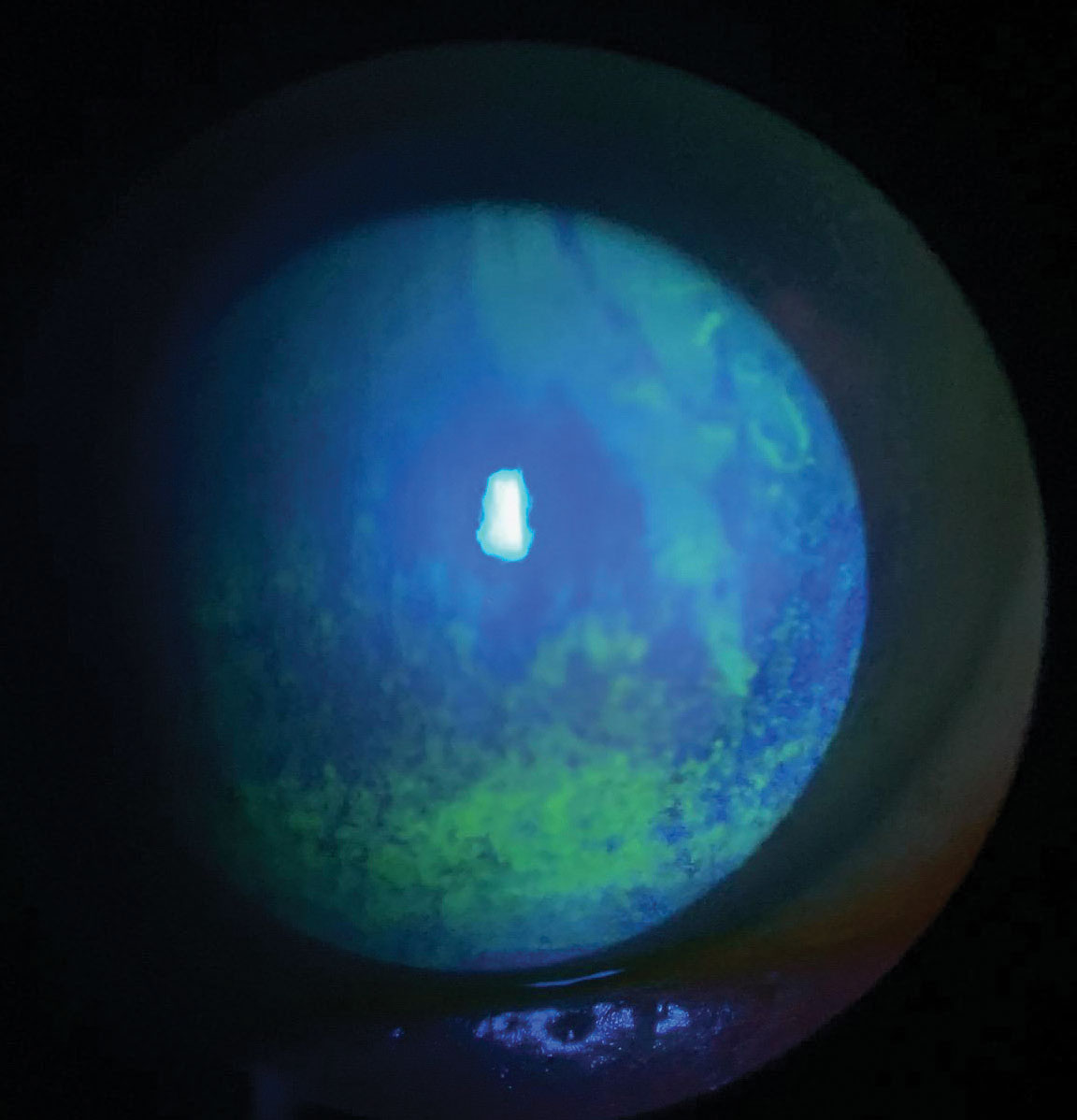 |
|
According to the study, 48.9% patients presented with a discrepancy in subjective symptoms and corneal findings. Among these cases, subjects were three times more likely to have positive symptoms in the absence of corneal epithelial damage than vice-versa. Photo: Scott G. Hauswirth, OD. Click image to enlarge. |
One confounding aspect of dry eye care is the common experience of patients whose signs and symptoms don’t align, with one or the other factor out of proportion based on what would be expected to arise. In order to better observe and assess dry eye cases with such discrepancies, researchers from Japan evaluated the maximum blink interval—or duration someone can keep their eyes open before blinking—in patients without a history of cataract surgery.
In a poster presentation at ARVO this Tuesday, researchers outlined the methods used in their study as well as the results. According to the study, a total of 364 patients were examined to determine whether they had positive or negative dry eye symptoms (DES) according to the Japanese version of the Ocular Surface Disease Index as well as positive or negative corneal epithelial damage (CED) after finding the patients’ corneal fluorescein staining score.
Participants were divided into two groups (presence or absence of discrepancy), then split again into four subgroups. The discrepancy groups were separated patients into these subgroups:
- symptoms (+), signs (-)
- symptoms (-), signs (+)
Subjects with no discrepancy either had both symptoms and signs together or neither of those findings:
- symptoms (+), signs (+)
- symptoms (-), signs (-)
Researchers performed a logistic regression analysis to observe assess the influence of factors in each group such as age, gender, tear film breakup time, tear secretion volume and maximum blink interval.
According to the researchers, the maximum blink interval results for the “symptoms but no signs” group were significantly shorter compared to the “no symptoms, no signs” group (10.9 sec. vs. 14.6 sec.). Also, the group with signs but not symptoms achieved a significantly longer maximum blink interval than the group with both (12.2 sec. vs. 9.6 sec.).
Furthermore, the researchers did two more subgroup comparisons: symptomatic vs. asymptomatic patients without signs and the same symptomatic vs. asymptomatic comparison in those with signs. They found a significant association between maximum blink interval and symptom/finding discrepancy for each pair of groups. Researchers did not find any significant differences between tear film breakup time and tear secretion volume.
“These results suggest that maximum blink interval may be able to evaluate cases with high symptoms-to-findings discrepancy that cannot be well-assessed using traditional diagnostic strategies,” explain the researchers in their study. “In particular, our findings suggest a potential usefulness of maximum blink interval measurements in identifying atypical cases of dry eye, where patients have prominent corneal findings but no symptoms.”
Original abstract content ©2024 Association for Research in Vision and Ophthalmology.
Nagino K, Inomata T, Midorikawa-Inomata A, et al. Evaluation of maximum blink interval for the detection of dry eye cases with discrepancy between subjective symptoms and corneal findings. ARVO 2024 annual meeting. |


